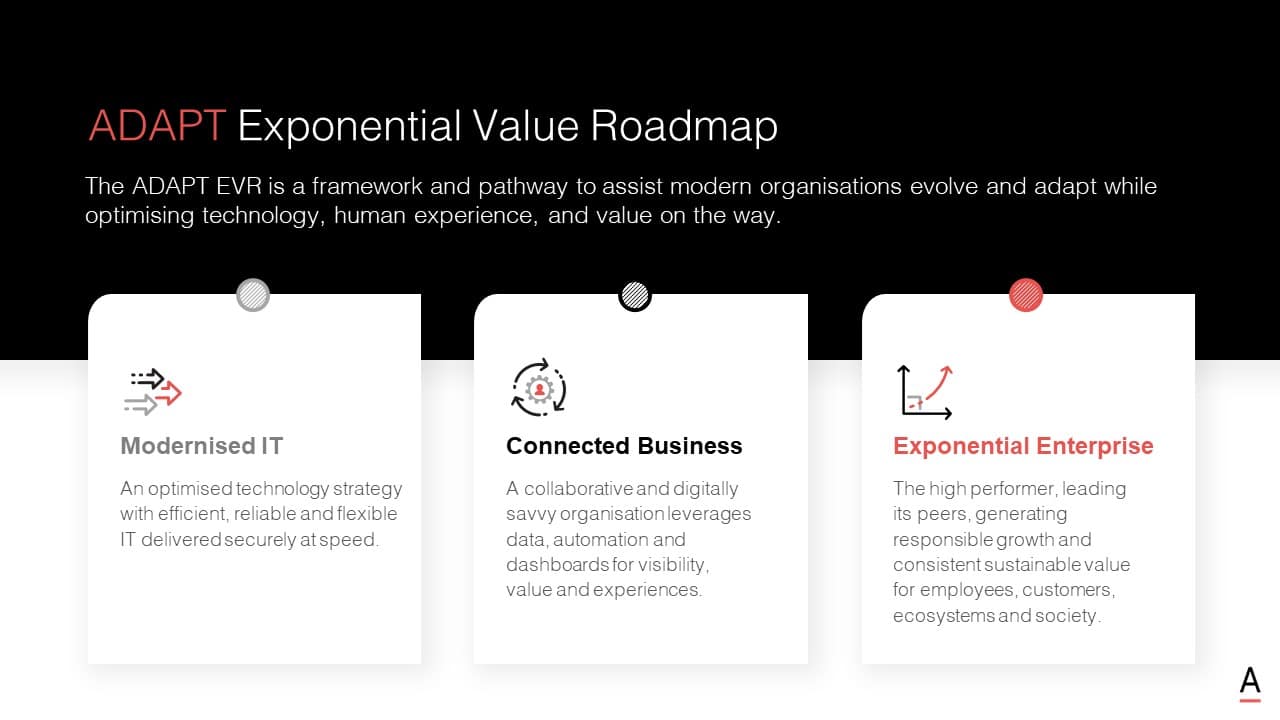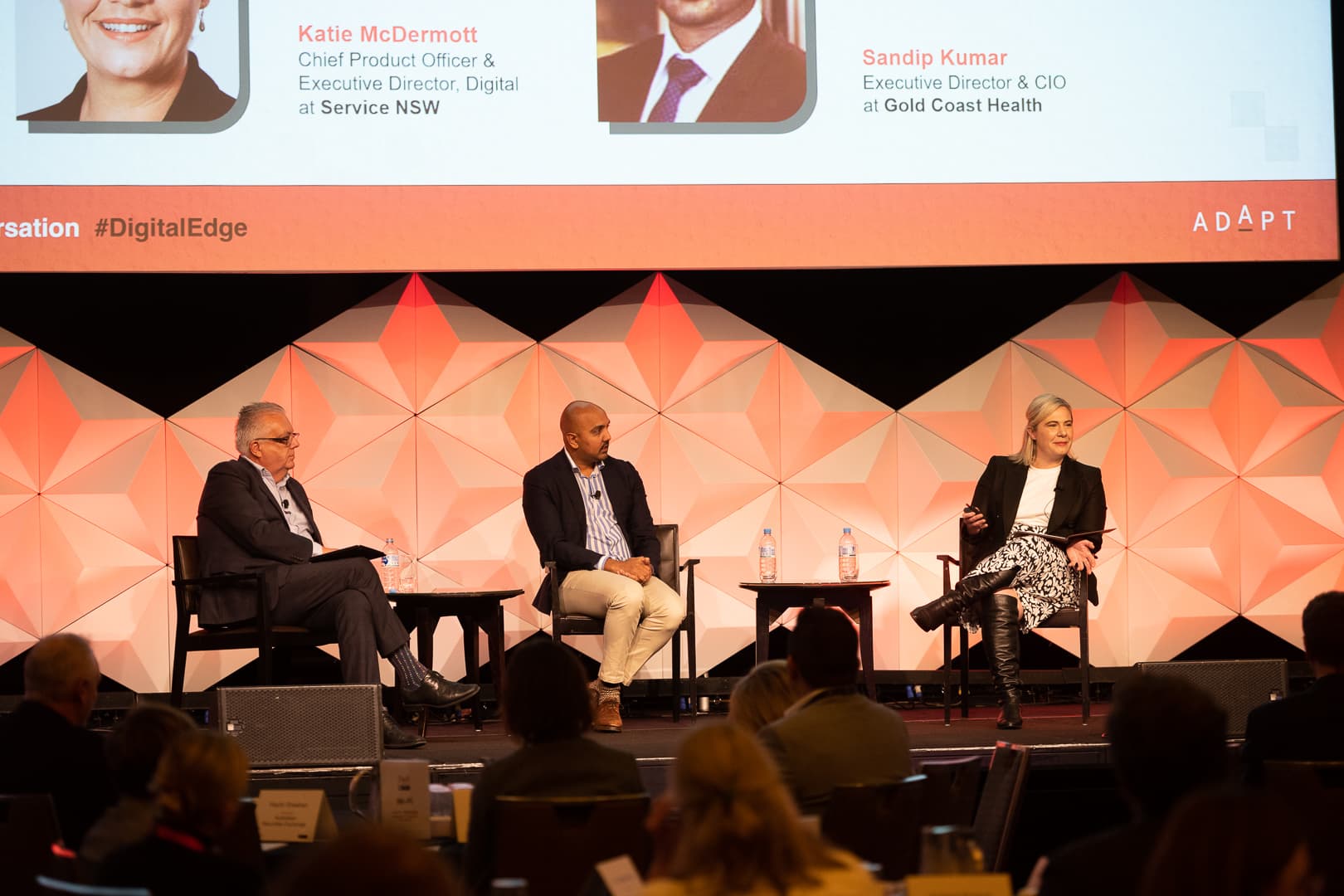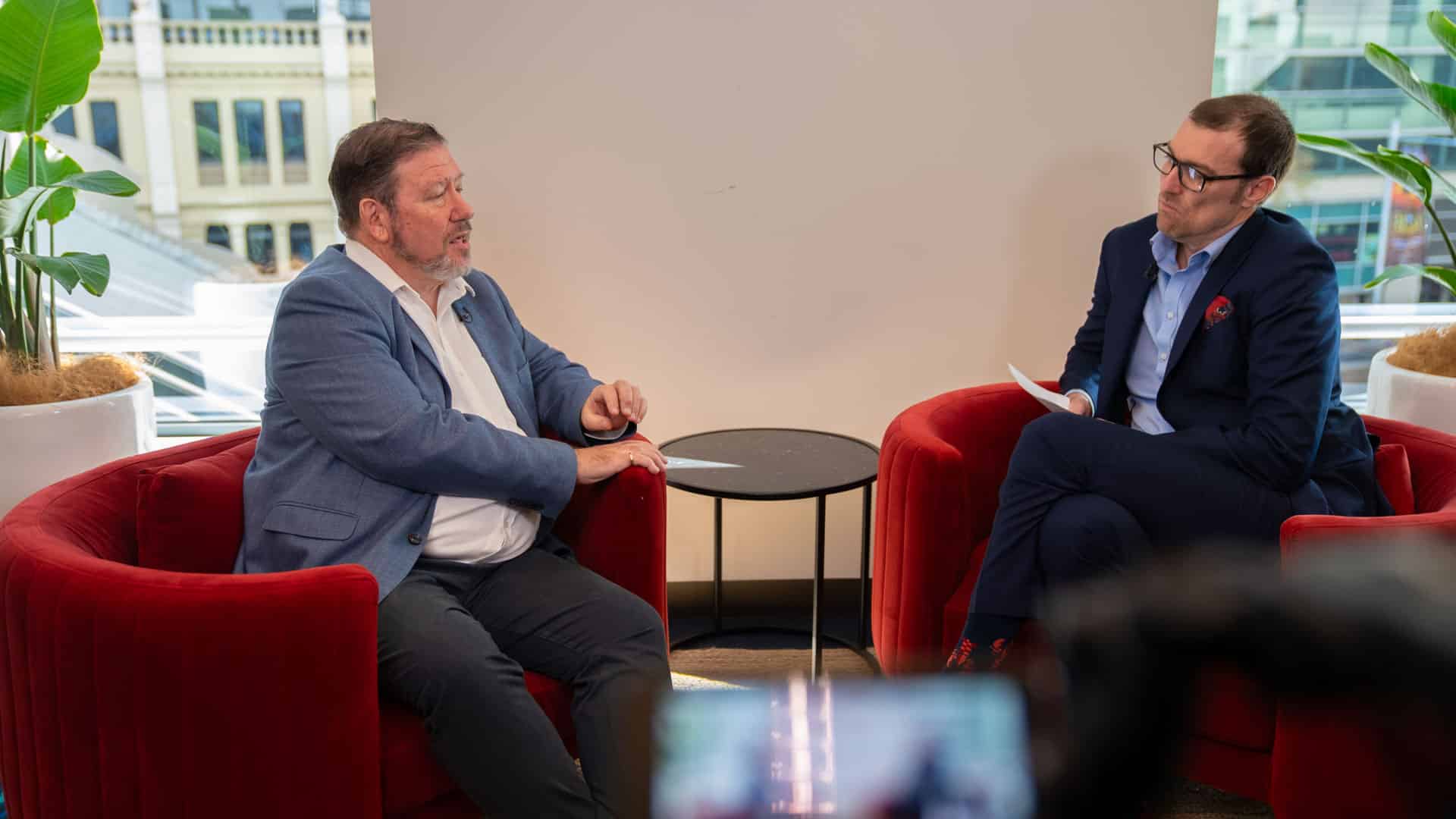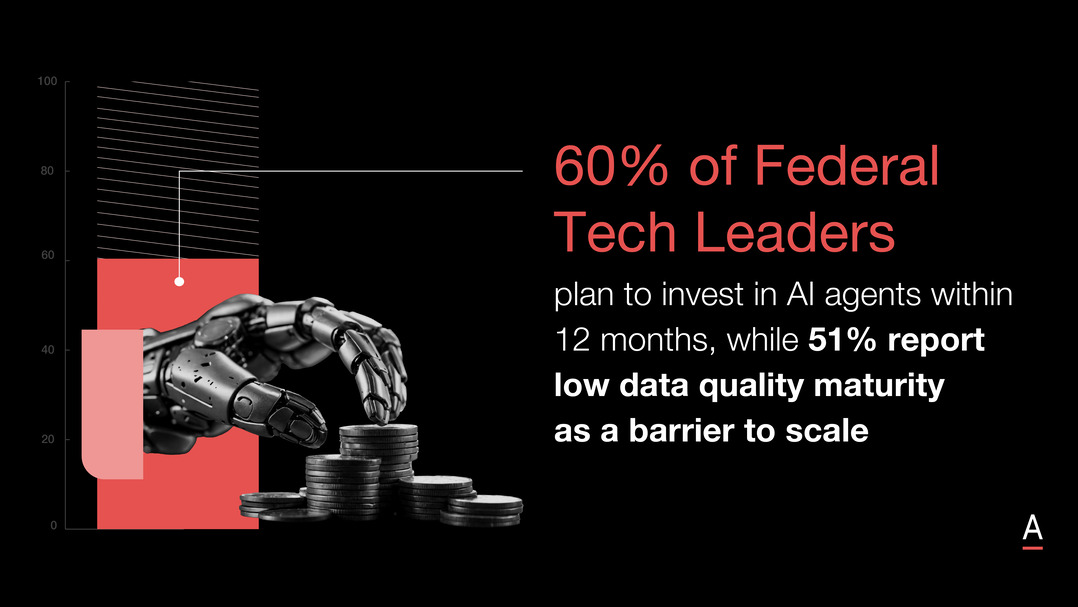CIO Insights: Prioritising, Innovating, and Igniting Business Growth
Unlock Accelerated Performance & Innovation. Legacy challenges impact Australian organisations. ADAPT explores transformative tech strategies for leaders.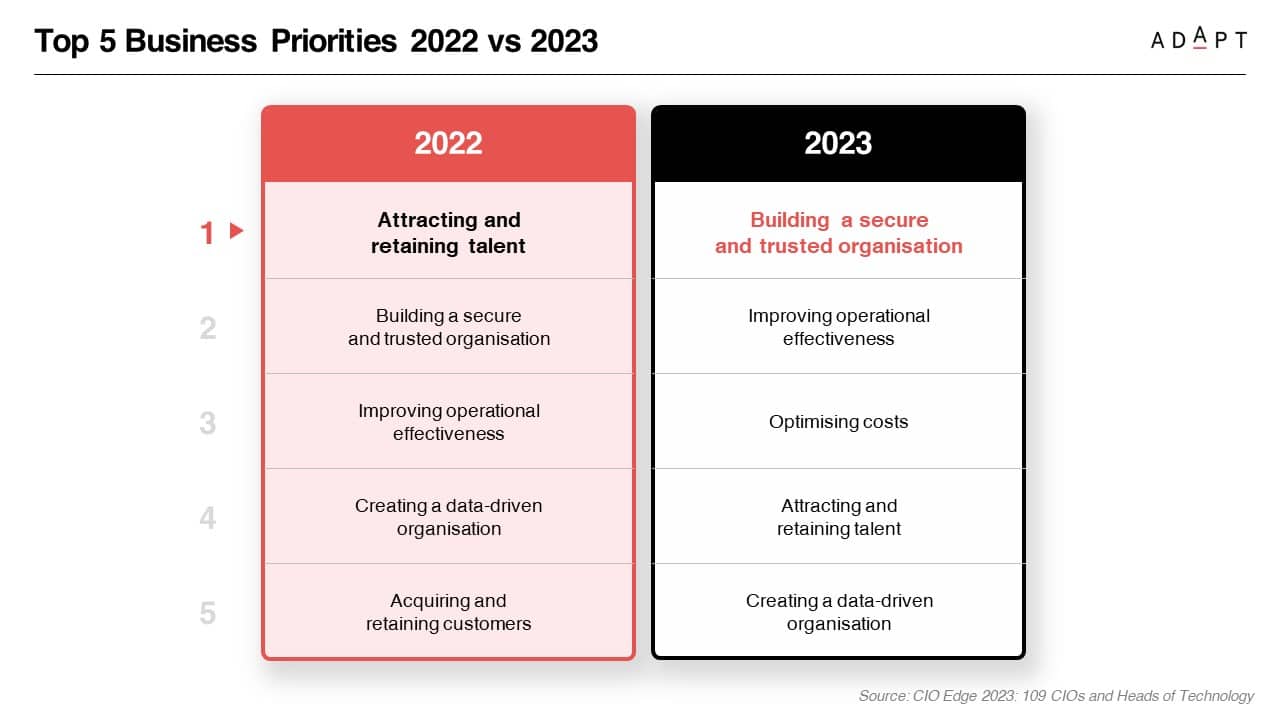
A staggering half of Australian organisations are hindered by legacy challenges, presenting a formidable barrier to their progress.
As a result, our nation’s standing in crucial global indices like productivity, innovation, and digital growth is rapidly deteriorating.
For over two decades, these organisations have struggled to align their systems with the demands of the business world.
The world has undergone a profound transformation, introducing intricate complexities and imposing new expectations on CIOs.
Following the devastating effects of major data breaches in 2022, establishing a trusted and secure organisation is a key focus and challenge for executives in 2023.
In today’s world, CIOs are expected to deliver unwaveringly resilient services, substantiate the value of technology investments, and lead technology-driven growth and innovation.
However, meeting these expectations necessitates a monumental leap forward—a comprehensive overhaul of operating models, architecture, skills, cultures, metrics, and approaches.

It is imperative that technology leaders develop a progressive tech strategy and communicate it forcefully to influential decision makers.
Obtaining the necessary resources to bring this strategy to fruition poses a daunting challenge, as budgets remain constrained and competing business priorities vie for attention.
The gravity of the situation becomes apparent when we consider the results of the CIO Edge survey which encompassed 250 organisations collectively responsible for a substantial 35% of the GDP.
Shockingly, most of these organisations are still fixated on rudimentary activities, dedicating only a meagre 8% allocation of the resources to exponential digital activities.
Time is of the essence, and decisive action is imperative to break free from the shackles of legacy and embrace a path of progress.
ADAPT seeks to discover the winning formula that propels organisations towards innovation and accelerated performance.
Empowering CIOs: Prioritising, Innovating, and Driving Business Growth in 2023
CIOs are under mounting pressure to optimise resources and digitally transform their businesses, which makes effective prioritisation essential to achieve value.
To determine priorities and play a vital role in the value chain for desired results, CIOs should consider commercial outcomes within risk profiles.
Streamlined business functions are just as crucial as an efficient IT department in driving business growth.
Informed decision-making demands a thorough understanding of the organisation’s pain points, business priorities, and core concerns.
In a panel discussion, ADAPT’s Principal Research Analyst, Peter Hind, explores practical approaches to fostering growth and leading innovation with insights from industry experts including, Damon Rees, Angela Anthony, and Sami Yalavac.

Overcoming Employee Tech Resistance for Business Growth
Technology can be a powerful differentiator in the fast-paced business landscape rather than just a passive enabler.
Angela Anthony, EGM of IT and Digital at Dulux Group, emphasises the need for CIOs to position technology strategically and participate actively in business discussions.
Key Insights:
Be a strategic partner: CIOs should present themselves as more than facilitators, driving the adoption of innovative technologies that provide a competitive advantage.
Overcome resistance: Established brands may face employee resistance to technology changes. Demonstrating technology’s positive impact on efficiency and results can help overcome resistance.
Foster a technology-centric mindset: Integrate technology into the business by emphasising its integral role and value to the organisation.
Align with commercial goals: By participating in strategic discussions, CIOs can ensure technology initiatives align with the company’s commercial objectives.
Showcase technology’s potential: Proactively communicate technology’s ability to drive innovation and enhance customer experiences to gain support and recognition.
By embracing these insights, organisations can leverage technology as a critical differentiator and excel in a competitive market.
Don’t Be a Tech Tyrant: Collaborative Prioritisation Wins
Damon Rees, the former CEO of Service NSW, highlights the importance of IT in prioritisation. IT should not be subservient, but rather, it should be an equal partner in the conversation.
- Collaborative Prioritisation Involving Multiple Stakeholders: Prioritisation is not solely an IT responsibility.CIOs should engage various departments and stakeholders in the process to ensure alignment with strategic goals and customer needs.Building trust and respect among departments is crucial, and IT should be seen as an equal partner in the conversation rather than subservient.Collaborating across departments ensures that initiatives with the highest value and impact are given priority.
- Technical Expertise and Quantifying Value: IT plays a significant role in the prioritisation process due to its impact on overall organisational performance.CIOs should leverage their technical expertise to contribute meaningfully to discussions and decisions. Quantifying the value delivered by IT initiatives to the business, customers, and partners is essential.Focusing on proof points and measurable outcomes helps justify investments and demonstrates the real impact of innovation.
- Customer-Centric Approach and Continuous Improvement: Successful prioritisation involves considering customer feedback and involving them in the process.The example of the digital driver’s licence pilot in Dubbo highlights the value of incorporating diverse user perspectives for enhancing the user experience.CIOs should adopt a customer-centric mindset and continuously seek ways to improve initiatives based on user input. This approach not only ensures better outcomes but also underscores the importance of customer engagement in driving innovation.
CIOs should collaborate across departments, leverage technical expertise to quantify value, and prioritise customer-centric initiatives while incorporating feedback for continuous improvement.
Don’t Just Manage IT, Lead the Business: Lessons from Sami Yalavac, former CIO at Bupa Australia and New Zealand
In the world of technology, IT prioritisation is a strategic business matter. Sami Yalavac, CIO at Bupa Australia and New Zealand, shares critical insights on effective prioritisation and its impact on driving business growth and innovation.
View IT as a Business Driver
CIOs should see themselves as business leaders who understand the expectations of various stakeholders, including government, competition, and customers.
This broader perspective allows CIOs to drive conversations about prioritisation and identify bottlenecks, leveraging their knowledge of IT dependencies and resource limitations.
By positioning IT as part of the leadership team, CIOs can better understand pain points and advise solutions that contribute to business success.
Use Frameworks for Decision-Making
Debating with stakeholders about IT prioritisation can be challenging.
CIOs can benefit from using frameworks, such as the one employed by Bupa, which conducts forums for debates and weighs requests based on compliance and risk factors.
Implementing governance and a structured framework guides discussions and helps delivery teams understand priorities and align their efforts.
This approach ensures a balance between business objectives and risk management.
Focus on Delivery and Balancing BAU with Innovation
Successful CIOs prioritise delivery and balance the demands of Business as Usual (BAU) operations with innovation efforts.
They understand that IT is a role that influences business operations and that prioritisation is both an art and a science.
CIOs should actively engage in project management discussions, facilitate proactive discussions with the business using a good Project Management Office (PMO), and present the benefits of IT initiatives, such as increased market share.
By reconciling BAU with innovation, CIOs can create business outcomes with technology while managing risks effectively.
CIOs can drive innovation by embracing their role as business leaders, utilising frameworks for decision-making, and maintaining a focus on delivery while balancing BAU with innovative initiatives.
How CIOs Can Navigate Legacy Tech in Connected Business Landscape
In February 2023, ADAPT surveyed 131 CIOs, CTOs, and other technology leaders from Australian-based organisations.
The focus was on agility and collaboration in the connected business landscape.
Connected business strategies, propelled by Generative AI and agile investments, foster exponential value and success in the ever-evolving digital landscape.
The CIOs’ focus on modernisation, security, and people management aligns with their intention to build a collaborative and digitally savvy organisation for future growth.
By investing in talent development and enhancing soft skills, CIOs can effectively integrate technology with business processes, driving meaningful communication and success across the organisation.

Modernisation focus: CIOs prioritise IT modernisation for resilient architectures and operational efficiency.
Increased security focus: CIOs emphasise security after the impact of cyber security breaches in 2022.
Challenges to execution: CIOs face barriers like interdepartmental collaboration and legacy technologies.
Connected business strategies: Organisations primarily concentrate on the Modernise IT stage of ADAPT’s Exponential Value Roadmap (EVR). To progress, it is crucial to address foundational IT legacy systems.
CIO investment priorities: CIOs invest in cyber security, data analytics, migration, and talent development to drive modernisation and connected business success.
Driving Tech-Enabled Growth: Embracing Digitisation for Revenue Generation
In Australia, CIOs and technology leaders actively pursue digitisation to unlock new revenue streams and achieve tech-enabled growth.
In an ADAPT CIO Edge survey amongst 160 CIOs, it was revealed that half of the respondents have digitisation levels ranging from 35% to 65% across their organisation’s operations.
As organisations increase their digitisation levels, their ability to capture value from operations improves significantly, with highly digitised organisations reporting 60% effectiveness in this area.
Engaging sales and customer service teams to address friction and leveraging digital channels enhances customer value and revenue growth.
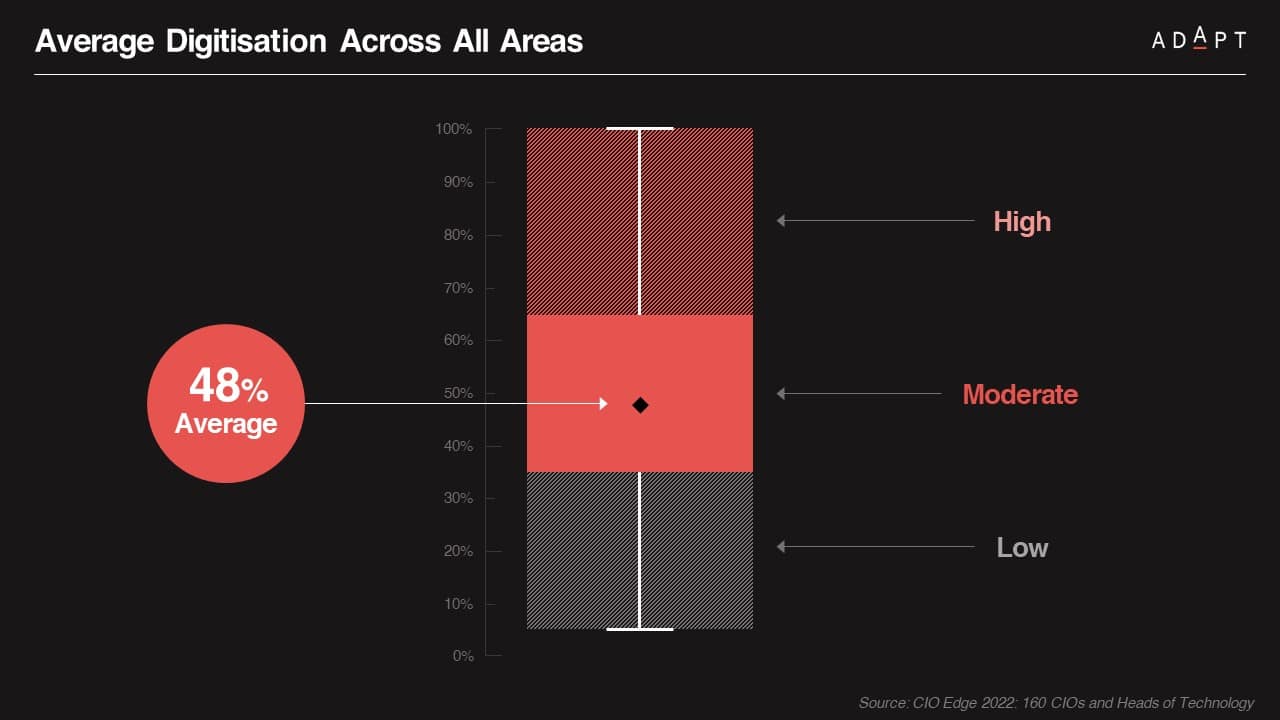
Chief Data Officers (CDO) recognise the importance of accurate data for informed decision making.
Improving employee experience becomes vital in attracting and retaining top talent.
Despite competing priorities, digitisation fosters cross-functional collaboration, driving tech-enabled growth.
Strengthening digitisation efforts across operations and customer interactions unlocks value and presents transformative opportunities. Prioritising employee experience aligns IT initiatives with new revenue pursuits.
Driving Exponential Growth: How Data Leaders Leverage Generative AI for Business Success
Artificial Intelligence (AI) and Machine Learning (ML) have revolutionised our daily lives, powered intelligent devices and enhanced various industries.
Generative AI offers immense potential to unlock exponential value among these transformative technologies.
We explore how Data Leaders, collaborating with the CIO and CFO, can harness the power of Generative AI and drive meaningful business outcomes.
Measuring Effectiveness: Reliability, Cost Models, and Impact
To harness the true potential of Generative AI, it is crucial to measure its effectiveness accurately.
Data Leaders should consider accuracy, speed, cost, and scalability factors.
Understanding the strengths and limitations of each model and assessing its real-world applicability will ensure impactful results.
Aligning AI Implementation with Corporate Strategies
Generative AI’s integration should align with corporate, IT, and people strategies.
Collaboration with key stakeholders, such as the CIO, CDO, and CFO, is essential in prioritising investments and developing talent strategies.
Organisations can drive significant value by integrating Generative AI into the broader business strategy.

Acting with Clarity: Spurring Accurate Value Realisation
To ensure accurate adoption and build trust with stakeholders, Data Leaders must work with clarity.
Understanding the technology’s reality and setting near-term objectives are critical.
Implementing Generative AI with feedback loops will enable organisations to efficiently refine strategies and realise value.
Executive Actions to Unlock Generative AI’s Value
Research use cases: Identify specific benefits and limitations of Generative AI for your business.
Invest in training and access: Ensure your team, including stakeholders beyond technology, comprehends Generative AI applications.
Partner with trusted experts: Collaborate with experts to navigate challenges and ensure successful deployment and integration.
Continuously monitor performance: Regularly optimise strategies to achieve the best results and address security, ethical, and regulatory concerns.
Gen AI Empowering Exponential Enterprises
Unlocking the value of Generative AI requires strategic alignment and responsible implementation.
By mitigating complexity and focusing on business value, Data Leaders can harness the true potential of this technology.
Early scoping, responsible development, and continuous monitoring of projects will pave the way for successful value realisation.
By embracing Generative AI, organisations can become Exponential Enterprises, driving innovation and creating lasting impact in their respective industries.
Redefining Digital Governance: NSW’s Leap into the Future
In a transformative era for New South Wales (NSW), Chief Digital & Information Officer Laura Christie explores the profound impact of the Digital Restart Fund (DRF) on governmental digital initiatives.
The DRF has revolutionised governmental valuation of digital expenditure, transitioning from a traditional waterfall methodology to an agile approach in product delivery. This shift has led to an impressive 80% of transactions being completed online, greatly benefiting citizens, local councils, and the NSW economy.
Additionally, Christie stresses the importance of accessibility and inclusivity in digital services, ensuring disadvantaged citizens, including those with disabilities, can access government services.
Her insights reveal how the NSW government’s digital transformation strategies, focusing on inclusivity and data-driven efficiency, can serve as a model for organisations aiming to prioritise innovation and fuel business growth.
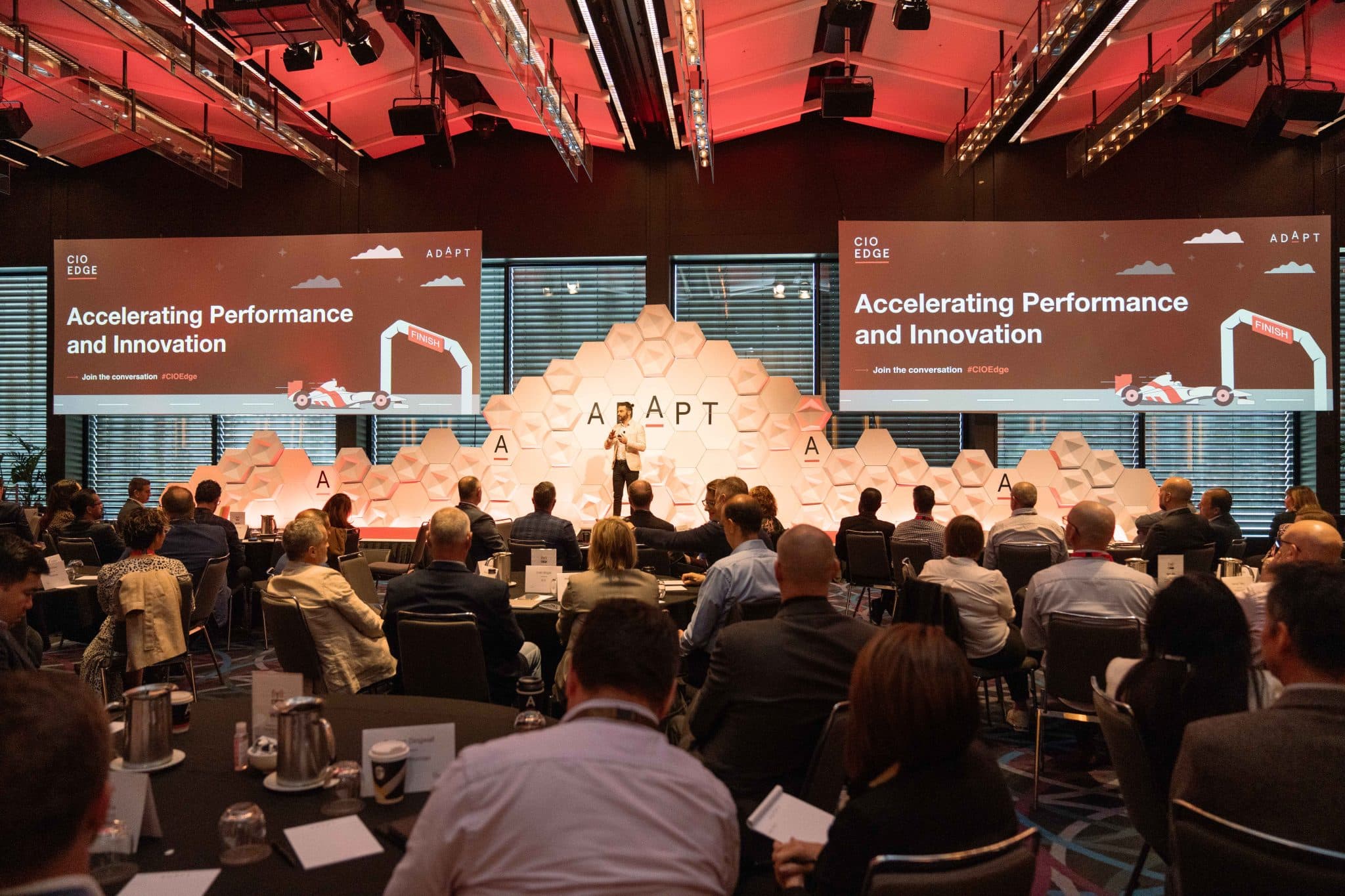
Challenges and Strategies for IT-Business Alignment
Gabby Fredkin, Head of Data and Analytics at ADAPT, emphasises the importance of aligning IT and business goals for exponential value.
However, tech leaders are hindered by external economic pressures and the impact of data breaches on customer trust.
Budget constraints and lack of cross-departmental visibility are also major alignment hurdles.
Effective organisations, Gabby notes, invest in skills and data literacy, especially for AI and generative technologies.
He suggests using decision trees to capture ecosystem value, focusing on digitisation, security, and integration of performance metrics and APIs.
Digital Transformation at Scale: Lessons from Service NSW and Gold Coast Health
Katie McDermott, Chief Product Officer & Executive Director, Digital at Service NSW, and Sandip Kumar, Executive Director & CIO of Gold Coast Health, share their expertise on driving digital transformation at scale.
Sandip underscores the importance of stakeholder education in digital initiatives and the value of robust technology partnerships.
Katie’s focus is on enhancing agility through internal software development and an API-driven approach, stressing customer feedback in service design.
Their approaches exemplify the integration of innovation and strategic thinking in digital transformation, aligning with goals of igniting business growth and prioritising impactful IT initiatives.
How Tech Leaders Can Lead the Charge in Modernisation and Measuring Value
In a CIO Edge panel led by Peter Weill, Chairman and Senior Research Scientist at MIT CISR, tech leaders converge to explore a vital aspect of CIO leadership: effectively balancing the prioritisation of technology with the delivery of tangible digital value.
This nuanced conversation, with panelists Amanda Fleming, Chief People & Technology Officer at Viva Energy Australia, Steve Hodgkinson, Chief Digital Officer at Victoria Police, and Julie Canepa, CIO at Cisco Asia Pacific, Japan & China delves into the intricacies of stakeholder education and the judicious allocation of finite resources in an era of boundless digital possibilities.
The insights shared resonate profoundly with CIOs aiming to spearhead innovation and growth, underscoring the need for agility, an inclusive approach to technology, and a robust, data-centric strategy in sculpting organisations that are equipped for the challenges of tomorrow.
Mercedes-Benz’s Path to Digital Excellence
Jan Brecht, CIO of Mercedes-Benz Group AG & Mercedes-Benz AG outlines the company’s strategic approach to digital transformation and customer-centred innovation.
This transformation journey includes process modifications, business model shifts, and advancing to higher levels of business model innovation.
With a focus on balancing local innovation and global integration, Mercedes-Benz is adopting a product-oriented strategy which allows various locations to take ownership of digital products while maintaining global standards.
Looking ahead, the company aims to revolutionise vehicle engineering with digital twins and streamline the car purchasing process for a more efficient customer experience.
Harnessing Data and AI for Educational Advancement
Rob Wilkins, Head of Information Services at Catholic Schools Parramatta Diocese, emphasises the growing significance of data and analytics in the educational sector.
His approach to integrating AI and data-driven strategies meets the evolving needs of students and educators, ensuring a dynamic and responsive educational environment.
He underscores the transformative impact of mentoring on students, particularly those from disadvantaged backgrounds, showcasing the profound influence of tailored educational support.
By focusing on data alignment, optimising technology processes, and elevating service maturity, they are not just navigating but actively shaping the future of education.
Digital Transformation as a Lever for Public Sector Progress
David Heacock, Senior Advisor at the Department of Health and Aged Care, provides a compelling overview of innovation and digitisation in government agencies to improve citizen experience.
Emphasising the crucial role of organisational culture, he advocates for a mindset shift towards psychological safety, decision-making autonomy, and transparent leadership to enable meaningful digital innovation.
He illustrates the significance of valuing data and outcomes over processes, citing Service NSW’s citizen-centric service approach and commitment to transparency as a prime example.
Addressing the balance between public expectations and the government’s cautious stance, Heacock highlights the growing interest and necessary safety considerations in AI adoption within public services.
He also discusses the challenges and importance of data sharing and privacy, underlining the need for interoperability to enhance public services.
Conclusion
Amidst legacy challenges hindering half of Australian organisations, our nation’s global standing in productivity, innovation, and digital growth is declining rapidly.
CIOs face unprecedented demands in 2023, requiring resilient services, substantiating tech investments, and driving innovation.
To meet these expectations, technology leaders must forge a progressive tech strategy and secure resources.























